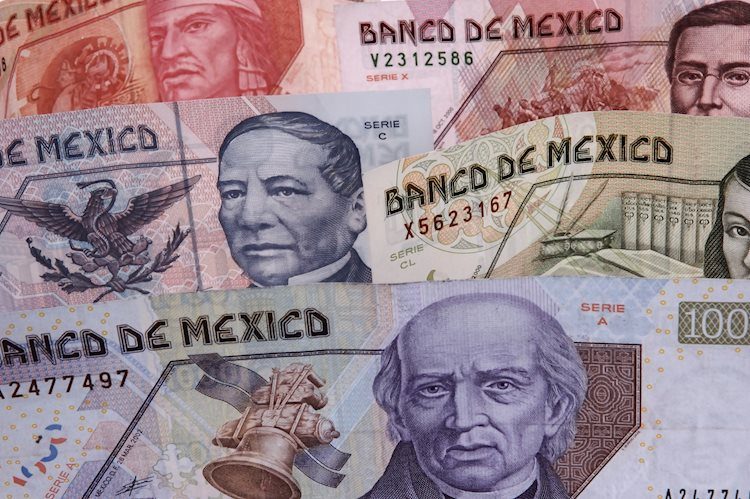The Mexican Peso (MXN) took a hit against the US Dollar following an inflation report signaling further interest rate cuts by the Bank of Mexico (Banxico). The USD/MXN traded at 19.48, up by more than 0.70% as Mexico’s inflation decreased in September, approaching Banxico’s 3% target. Banxico is expected to continue easing its key rates after a cut to 10.50% in September, with additional cuts projected by the end of 2024.
The Federal Reserve’s September Meeting Minutes revealed that some officials preferred a 25-basis-point rate cut, while all agreed on the need to lower interest rates. Most officials saw inflation risks tilted to the downside and risks to the labor market tilted to the upside. The US Dollar Index (DXY) climbed to 102.85, supported by an increase in US Treasury yields.
Market analysts predict that Banxico will further reduce rates by 50 basis points to 10% for the remainder of 2024, with the USD/MXN exchange rate expected to end around 19.69. Mexico’s economy is forecasted to grow by 1.45% in 2024. Data from the December fed funds rate futures contract suggests that investors estimate a 48-basis-point easing by the Fed by the end of 2024.
The technical outlook for the USD/MXN pair suggests further gains as it surpassed the 50-day Simple Moving Average at 19.37. Momentum favors buyers with a bullish Relative Strength Index (RSI) reading. If the exchange rate clears 19.50, it could target the October 1 daily high of 19.82 and potentially reach 20.00 and then 20.22. On the downside, a drop below 19.10 could expose the 19.00 level, followed by the 100-day SMA at 18.64.
The value of the Mexican Peso is influenced by various factors such as the country’s economy, central bank policy, foreign investment, remittances from abroad, and geopolitical trends. The main objective of Banxico is to maintain inflation at low and stable levels around 3%. Interest rate decisions by Banxico play a crucial role in determining the strength of the Mexican Peso. Macroeconomic data releases and the overall state of the economy also impact the valuation of the MXN.
As an emerging-market currency, the Mexican Peso tends to perform well during risk-on periods when market risks are perceived to be low. Conversely, it tends to weaken during times of market turbulence or economic uncertainty. Factors such as economic data, interest rate decisions, and geopolitical developments all contribute to the movement of the Mexican Peso in the foreign exchange market.











